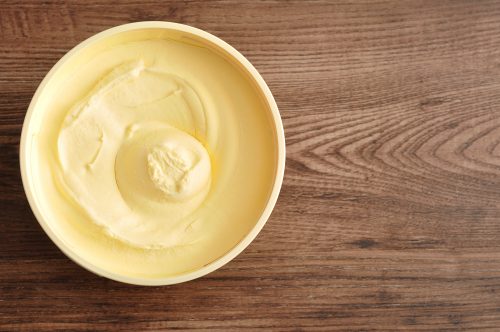
Q: “Before finding out I had high cholesterol I never used butter or margarine as a spread, or in cooking, as I didn’t like the taste. So I’m struggling to eat the recommended 25g of sterol-enriched spread per day and I’d appreciate some ideas on how to use it. Also, are the plant sterols affected by heat when cooking?”
JeskaA: Nutritionist Cindy Williams responds:
“Plant sterol spread is not suitable for frying but is fine for baking such as scones or muffins, to grease baking dishes, and to make white sauce. Try adding chopped fresh herbs or sun-dried tomatoes to the spread to make a tasty topping for steamed vegetables and baked potatoes. Add a little to fish baked in foil. Make scrambled eggs with a dash of low-fat milk and a dash of plant sterol spread, and serve with tomatoes on grainy toast spread with plant sterol spread. Or cook mushrooms with a little spread and serve with chopped parsley on whole grain toast – delicious!
The most effective way to reduce cholesterol levels is to eat less saturated fat which means avoiding butter, pastries, pies, full-fat dairy foods, fatty meat, salamis, sausages, and chicken skin. Including plant sterols in your diet may help reduce it even further when added to a low-saturated fat diet. Plant sterols are naturally found in foods rich in vegetable oil such as nuts and seeds, and vegetable oils. The more plant foods you eat, the more plant sterols you get. Plant sterols compete with cholesterol in the gut and reduce its absorption so when using a plant sterol spread it’s best to include it in a couple of meals each day.
For people who like a spread on their bread, simply swapping to a plant sterol spread is easy and effective. A number of studies have shown that eating 25g (about 5 teaspoons) of plant sterol spread a day reduces LDL cholesterol levels by about 10% in three weeks. This is why 25g a day is recommended. Eating less than this will still help, just not as much.”
www.healthyfood.com










